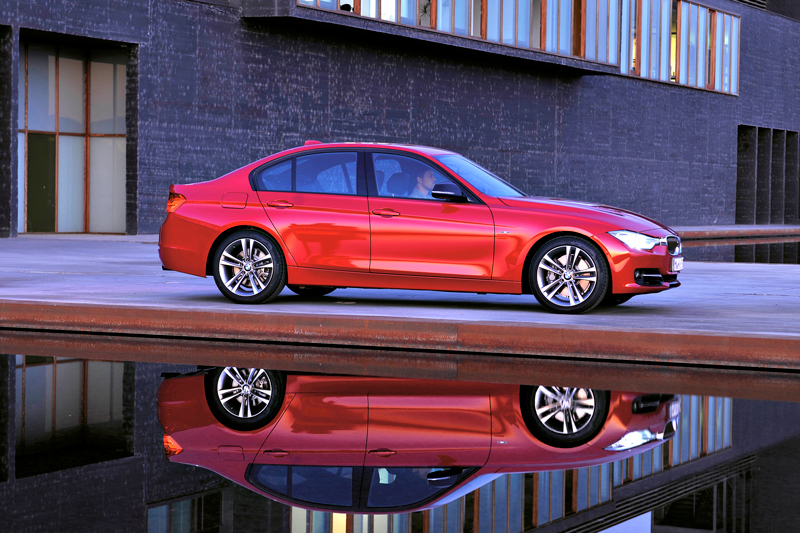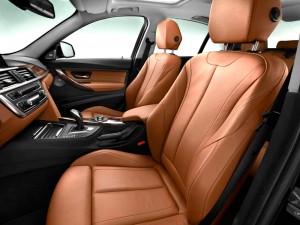Simple Pleasure | 2014 BMW 320i
By Marc Schulhof
February 2014 View more For The Road

Photos courtesy of © 2013 BMW of North America, LLC
In this age of apps and always-available electronics, of luxury defined by automation and computer controls, the 2014 BMW 320i stands out for the standard features it does not include. No back-up camera or power leather seats. No navigation or parking sensors. No adaptive cruise control or sunroof. The car’s 2.0-liter engine also might seem a bit small for an ultimate driving machine.
 Sure, many of those doodads are available as options—as are various larger engines—but the streamlined feature list is the price you pay for choosing BMW’s least expensive sedan. It’s a car that is only a rounding error away from being BMW’s least expensive vehicle. The price you will not pay is $4,550—the considerable amount that BMW’s value leader 320i shaves off the price of the more powerful and virtually identical looking 328i.
Sure, many of those doodads are available as options—as are various larger engines—but the streamlined feature list is the price you pay for choosing BMW’s least expensive sedan. It’s a car that is only a rounding error away from being BMW’s least expensive vehicle. The price you will not pay is $4,550—the considerable amount that BMW’s value leader 320i shaves off the price of the more powerful and virtually identical looking 328i.
More importantly for BMW buyers, you will also not pay a particularly noticeable price in terms of lost performance. Compared to the 328i, which also has a turbocharged four-cylinder engine, the 320i does offer less power (180 horsepower vs. 240) and a slower reported zero-to-60 sprint (7.1 seconds vs. 5.8).
But by a seat-of-the-pants measure, the 320i feels surprisingly quick. Credit goes to the magicians in the engineering department who spent late nights at their drafting tables coaxing a robust 200 pound-feet of torque out of the engine at just 1,250 rpm. Translation? The engine delivers as soon as you put your foot down, and keeps delivering up through 30, 40, 50 miles per hour. The turbocharger performs with complete transparency, as does the standard eight-speed automatic transmission.
 Driving is not just about acceleration and the 320i makes good on the BMW nameplate with its fantastic rear-wheel-drive handling. The 320i’s steering initially feels heavy compared to many other small sedans, but that heaviness becomes a source of comfort the longer you drive the car.
Driving is not just about acceleration and the 320i makes good on the BMW nameplate with its fantastic rear-wheel-drive handling. The 320i’s steering initially feels heavy compared to many other small sedans, but that heaviness becomes a source of comfort the longer you drive the car.
As with all BMWs, the 320i also delivers solidity and comfort in equal measures. The doors close authoritatively, the seats mean business, and the interior, thought somewhat bland, looks to be built for decades of service.
The 320i’s auto start/stop feature is the type of technology that is popping up on more and more vehicles—a parlor trick that saves a bit of fuel every time you drive. Unfortunately, in this application the start/stop function causes a noticeable shudder when the 320i’s engine springs back to life.
That shudder is the only false note in an otherwise delightful driver’s car. With is dearth of distractions, the 320i focuses attention on the experience of driving and to great effect.
The 2014 BMW 320i sedan stickers at $32,750 with the same sculpted body as the 328i ($37,300) and the 335i sedan—a 300-horsepower version with a $43,400 price tag. An optional all-wheel drive system adds $2,000 to the 320i’s base price and exacts a one mile-per-gallon fuel economy penalty (23 city/35 highway, compared to 24/36 for the rear-wheel drive model). Options are many, and can easily account for the money saved by choosing the smallest engine in the lineup.
By comparison, the same money can buy you any number of competitive sedans. For example, the Ford C-MAX Energi plug-in hybrid gets 108 miles per gallon, can parallel park itself, and features an optional voice-activated navigation system and foot-activated liftgate. For about $30,000 you can get an all-new and fully loaded Nissan Altima that delivers horsepower and fuel economy comparable to the 320i and offers features like a blind-spot monitor, lane-departure warning, and touchscreen navigation. But then again, it is never just about the features: You cannot put a price on the frisson you might feel as you approach your BMW in the parking lot.





